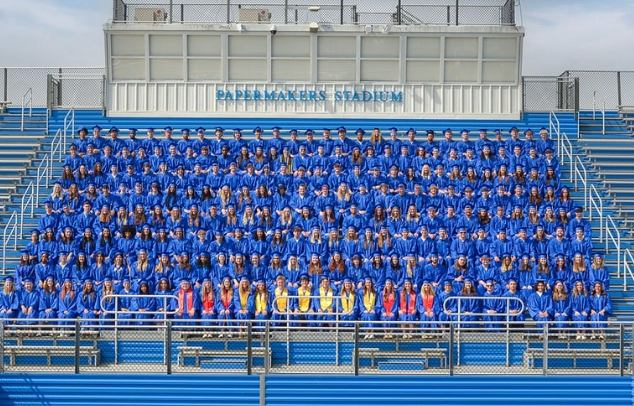Sixteen Spring Grove students were interviewed about public displays of affection (PDA) in school, and it was found that 14/16 students had a very negative view about PDA. In the mornings, the halls, and at events almost everyone has witnessed at least one act of PDA. When looking at the policies about PDA, it was only mentioned once in the handbook; as an example for what would get someone a level one disciplinary action.
Most of the students that were interviewed see PDA as negative. When going to classes, it can be a disruption, with couples stopping in the middle of the halls to hug, blocking the flow. Some students report turning the corner and seeing students kissing off to the side and it being very awkward, even saying it felt like a “jumpscare”. However the two students that were asked that had positive opinions had their reasons why.
A sophomore stated that “Everyone feels affection,” and that they think that “people don’t want to see what they don’t have” and that for them, “affection represents a form of passion and love” they ended it out with saying that “people shouldn’t be forced to silence their emotions and love because of others”. A junior stated that they “agree with the aspect of allowing it in school, depending on the level of PDA.” Since too much “could definitely be considered unprofessional in [a school] environment.” And when the student was asked why they held that opinion, they stated that “Allowing PDA can create an environment where healthy relationships are celebrated” and that it could “help students understand that affection is a normal part of relationships and it’s important to express feelings openly and respectfully. I think school should encourage learning to express affection appropriately and encourage the learning of emotional intelligence and interpersonal skills.”
On the opposite side some students said that “it’s sort of disrespectful” (sophomore) and they wished that people who engage in PDA would “think about the people around [them]” (sophomore) Many of the people interviewed shared the opinion that “there is nothing wrong with loving your significant other, that’s wonderful, but if [they] are in the middle of the hallway and [they] are kissing, I will push you down ” (Senior), “I don’t care what you do at home, just don’t do it at school” (junior). And the most common answer was simply, “time and place”.
Looking through the student handbook to see what the school rules had to say about PDA, there is currently only one mention of PDA; as an example of something that would warrant a level I disciplinary action. The school board policies had no mention at all. Ms. Erich couldn’t find any school rules about it either. She said that she was going to consult with Dr. Dietrich about it.
After talking to a variety of students the consensus seems to be that there should be rules around PDA. The point about social learning one student brought up made a good point about providing opportunities to learn when certain types of PDA are okay. No one interviewed was against people being able to hold hands or even hug, but past that was where people began to feel uncomfortable and awkward. Learning the appropriate time and place to show affection is crucial, and schools should set boundaries to maintain a safe, supportive, and respectful environment for everyone.





